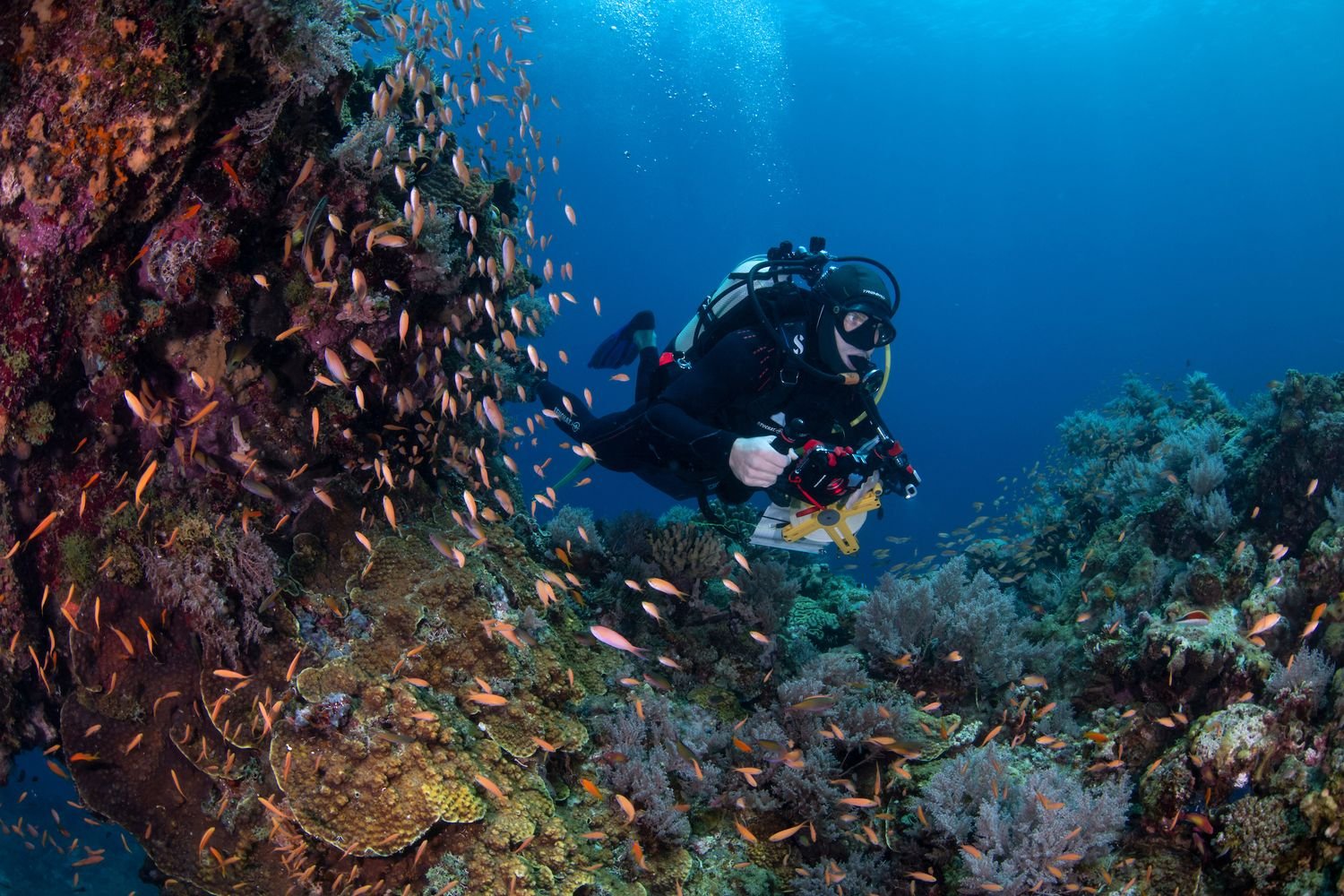
Courtesy: Rick Stuart-Smith/University of Tasmania
A recent study led by UNCW Assistant Professor of Biology and Marine Biology Matthew McLean, published in the Proceedings of the National Academy of Sciences (PNAS), explores what makes a coral reef appear beautiful to the public—an issue that has become increasingly important for both conservation and economic value of these ecosystems.
McLean is part of an international team of researchers who analyzed the perceived beauty of more than 3,500 groups of reef fish around the world. The team combined data from a global reef monitoring program with assessments of fish species’ aesthetic appeal, gathered through public surveys. They found that beauty is strongly linked to both the number of species and the presence of especially colorful or uniquely shaped fish.
“Rocky and coral reefs, which are among the most colorful and vibrant ecosystems on the planet, attract millions of visitors each year and generate major economic benefits, especially in developing tropical countries,” said McLean. “Tropical regions with species-rich diversity need to protect these ecosystems to maintain and enhance their natural value.”
The study shows that marine protected areas support more beautiful reefs.
“Coral reefs play a vital ecological role, connect people to nature and support local tourism, so protecting their beauty should be a key part of conservation,” McLean added. With fewer than 7% of reefs effectively protected, the findings reflect the need for greater conservation efforts. Preserving the rich beauty of the oceans helps protect and support fisheries, tourism and human well-being.

This article has the following tags: Research & Innovation myUNCW - Faculty & Staff CSE - College of Science & Engineering UNCW News Homepage Center for Marine Science


